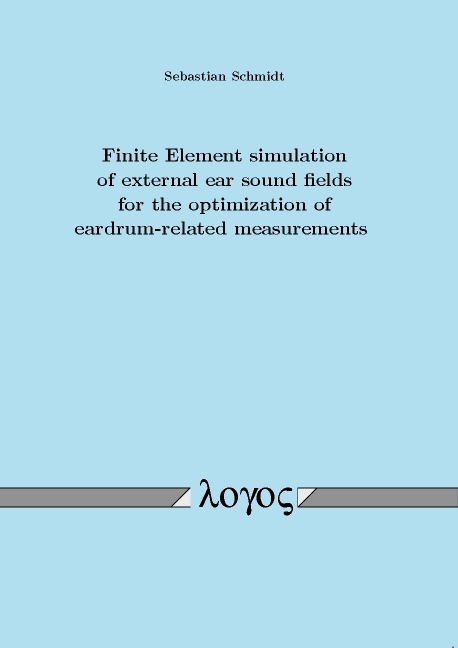Finite Element simulation of external ear sound fields for the optimization of eardrum-related measurements
Seiten
The sound pressure p₊T at the human eardrum has essential advantages as
reference signal in audiological and psychoacoustical experiments.
Unfortunately, precise pressure measurements very close to the tympanic
membrane are difficult. In practice, the microphone has to be positioned at
a certain distance from the eardrum. The measured pressure then has to be
transformed to the eardrum. As a ``classical'' approach for the estimation of
the necessary transfer function, an acoustical network model of the ear
canal is developed from geometrical data of the canal (cross-sectional area
function) which is in turn determined from measurements of its acoustical
input impedance. Such methods, however, do not provide robust results.
In this thesis, the concept of one-dimensional models of the ear canal is
examined to find the origin of these errors. For this purpose, the sound
field at the human external ear was analyzed using finite element models.
Inside the canal, irregular three-dimensional structures occur that cannot
be modelled accurately using classical one-dimensional network concepts.
Upon these findings, an accurate, efficient and highly feasible method for
the estimation of p₊T was developed. Equal-loudness level contours with
reference to the eardrum pressure that were measured as pilot application of
the new method are presented.
reference signal in audiological and psychoacoustical experiments.
Unfortunately, precise pressure measurements very close to the tympanic
membrane are difficult. In practice, the microphone has to be positioned at
a certain distance from the eardrum. The measured pressure then has to be
transformed to the eardrum. As a ``classical'' approach for the estimation of
the necessary transfer function, an acoustical network model of the ear
canal is developed from geometrical data of the canal (cross-sectional area
function) which is in turn determined from measurements of its acoustical
input impedance. Such methods, however, do not provide robust results.
In this thesis, the concept of one-dimensional models of the ear canal is
examined to find the origin of these errors. For this purpose, the sound
field at the human external ear was analyzed using finite element models.
Inside the canal, irregular three-dimensional structures occur that cannot
be modelled accurately using classical one-dimensional network concepts.
Upon these findings, an accurate, efficient and highly feasible method for
the estimation of p₊T was developed. Equal-loudness level contours with
reference to the eardrum pressure that were measured as pilot application of
the new method are presented.
Die Kunst der Übersetzung
| Erscheint lt. Verlag | 31.8.2009 |
|---|---|
| Sprache | englisch |
| Maße | 145 x 210 mm |
| Einbandart | Paperback |
| Themenwelt | Naturwissenschaften ► Physik / Astronomie ► Mechanik |
| Schlagworte | Audiologie • Finite Elemente • Hörakustik • Hardcover, Softcover / Physik, Astronomie/Mechanik, Akustik • Hörakustik • Messtechnik • Psychoakustik |
| ISBN-10 | 3-8325-2262-X / 383252262X |
| ISBN-13 | 978-3-8325-2262-9 / 9783832522629 |
| Zustand | Neuware |
| Haben Sie eine Frage zum Produkt? |
Mehr entdecken
aus dem Bereich
aus dem Bereich
Statik - Kinematik - Kinetik - Schwingungen - Festigkeitslehre
Buch | Hardcover (2021)
Hanser, Carl (Verlag)
CHF 41,95




